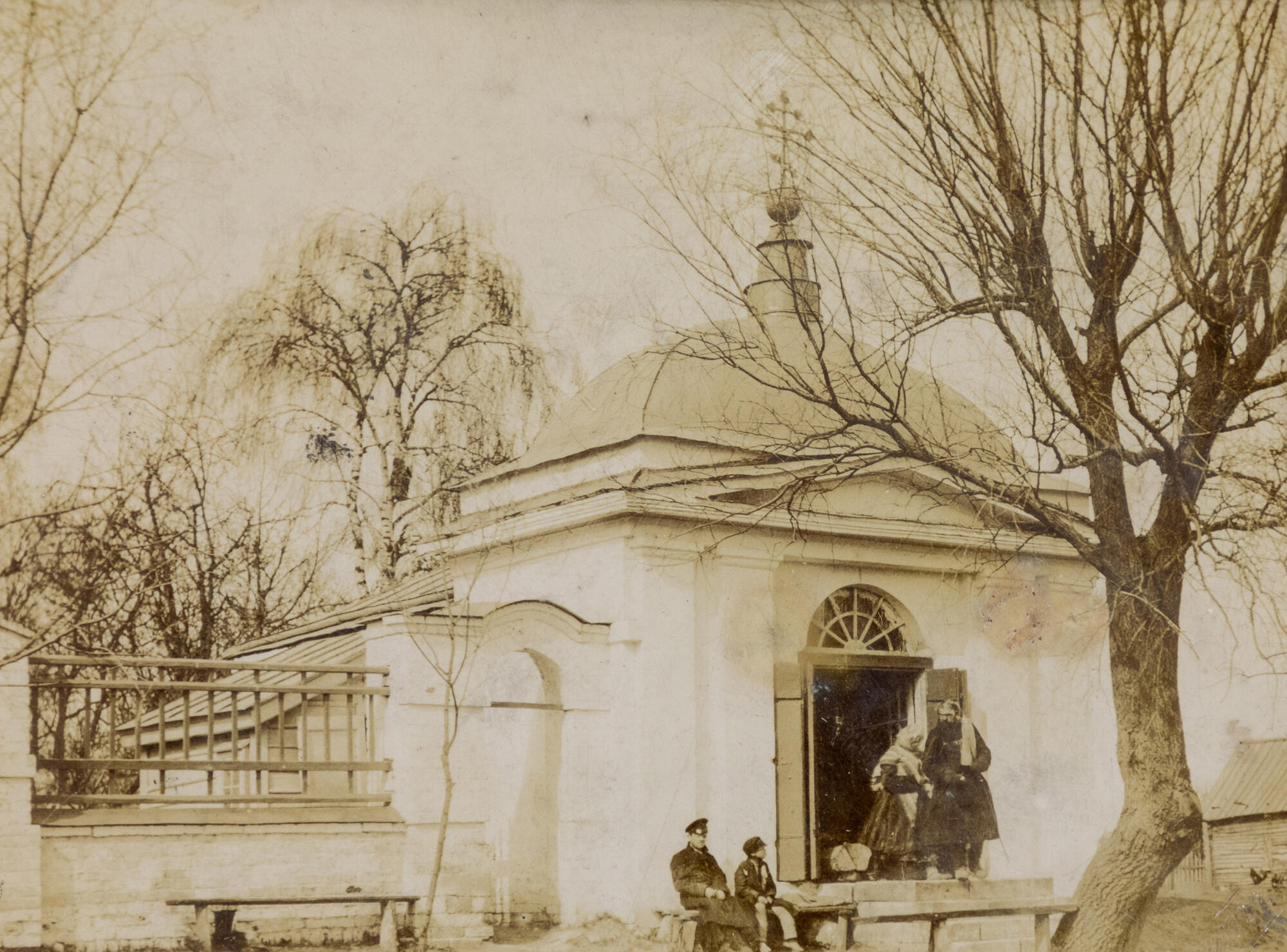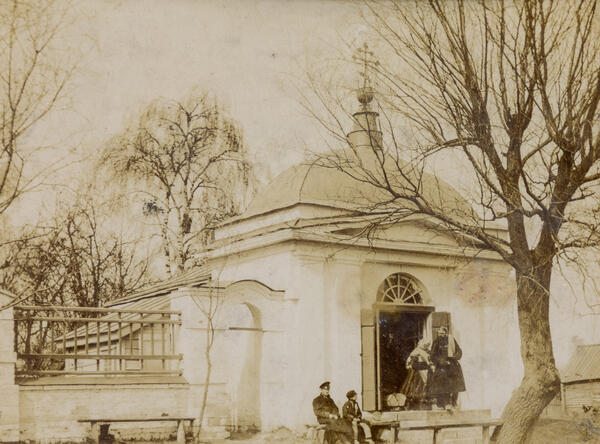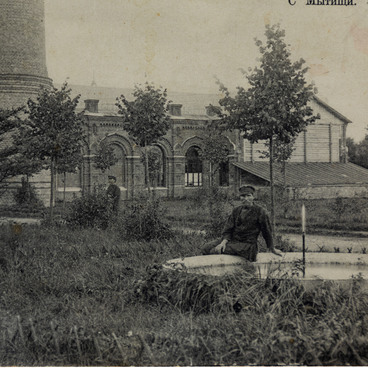The church with a bell tower built in the highest point of Bolshie Mytishchi was situated left of the Troitsky highroad. It could be seen from afar. The church was a decoration and the dominant feature of the village. Today’s stone Church of Our Lady of Vladimir was first mentioned in the documents dated 1713. The occasion was consecration of the Nikolsky altar “upon petition of Mytishchi, Moscow Uyezd, by the Bogoroditsky priest Dmitry.” This date is considered to be the construction date of the church.
For the second time, a mention of this church in found in a document dated 1735. The priest at the Church of Our Lady of Vladimir, votchina (inherited estate) of Her Majesty Tsarevna Elizabeth of Russia at Mytishchi, Ivan Fyodorov wrote to the Synodic Stated-Owned Office. He asked for a permission to lay a stone flooring in the church because the old wooden one had become dilapidated. The permission was granted, and the flooring was replaced. They also replaced wooden altars with stone ones.
The architecture of the church was in the style of the Moscow baroque, with a traditional composition: vosmerik (octagonal building) on a chetverik (rectangular building) with a three-part apsis and a “one-sided” (with a side-altar on the north) refectory on the west. Next to it was a stone chapel.
The church came to its current appearance in the early 19th century thanks to the effort of the priest Dmitry Fryodorov. In March 1816, he sent a petition to the Moscow Archdiocese to build a new bell tower based on the plan he presented. In the petition he said, “the bell tower of our church has become fallen into disrepair and might fall.”
In 1817—1819, a new round bell tower was built in the village, and the church building underwent major restoration works. As a result, a stone-walled refectory was added to it. The three-story bell tower with seven bells in the Empire style stand out for its height and large features. Its architecture emphasized the status of the village as the new rural district center. Around the same time the decision was made to turn the bell tower into a visual reference for pilgrims on their way to the Holy Trinity Lavra of St. Sergius.
Workers arranged a graveyard next to the church. A native of Bolshie Mytishchi, peasant Avdotya Kartseva, wet-nurse of Emperor Alexander the Second is buried here.
For the second time, a mention of this church in found in a document dated 1735. The priest at the Church of Our Lady of Vladimir, votchina (inherited estate) of Her Majesty Tsarevna Elizabeth of Russia at Mytishchi, Ivan Fyodorov wrote to the Synodic Stated-Owned Office. He asked for a permission to lay a stone flooring in the church because the old wooden one had become dilapidated. The permission was granted, and the flooring was replaced. They also replaced wooden altars with stone ones.
The architecture of the church was in the style of the Moscow baroque, with a traditional composition: vosmerik (octagonal building) on a chetverik (rectangular building) with a three-part apsis and a “one-sided” (with a side-altar on the north) refectory on the west. Next to it was a stone chapel.
The church came to its current appearance in the early 19th century thanks to the effort of the priest Dmitry Fryodorov. In March 1816, he sent a petition to the Moscow Archdiocese to build a new bell tower based on the plan he presented. In the petition he said, “the bell tower of our church has become fallen into disrepair and might fall.”
In 1817—1819, a new round bell tower was built in the village, and the church building underwent major restoration works. As a result, a stone-walled refectory was added to it. The three-story bell tower with seven bells in the Empire style stand out for its height and large features. Its architecture emphasized the status of the village as the new rural district center. Around the same time the decision was made to turn the bell tower into a visual reference for pilgrims on their way to the Holy Trinity Lavra of St. Sergius.
Workers arranged a graveyard next to the church. A native of Bolshie Mytishchi, peasant Avdotya Kartseva, wet-nurse of Emperor Alexander the Second is buried here.



